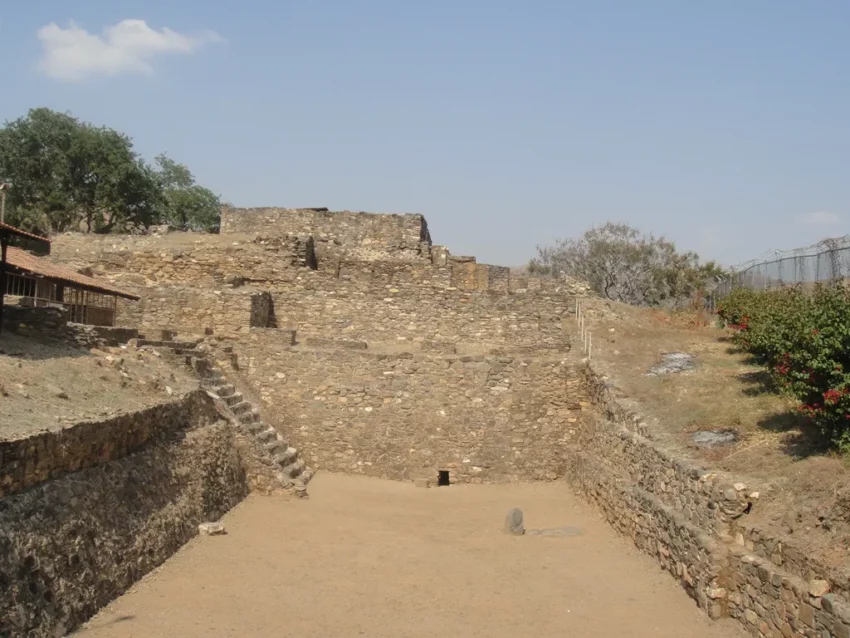San Miguel Ixtapan is an archaeological site located in the State of Mexico, known for its historical significance and ancient artifacts. The site dates back to the pre-Columbian era and has been a focal point for studies on Mesoamerican civilizations. It provides valuable insights into the Teotihuacan culture, which flourished in central Mexico. The discovery of tombs, monuments, and various artifacts at San Miguel Ixtapan has contributed to our understanding of the social, political, and religious practices of the people who once inhabited this region.
Get your dose of History via Email
Historical Background of San Miguel Ixtapan
Archaeologists stumbled upon San Miguel Ixtapan in the 20th century. They unearthed a site rich in history and culture. The Teotihuacan civilization, known for its architectural marvels, built this site. Over time, other Mesoamerican cultures inhabited the area. San Miguel Ixtapan has witnessed various historical events, including cultural exchanges and conflicts.
The site was first excavated in the 1980s. A team led by archaeologist George Cowgill made the discovery. They found evidence of a complex society with advanced knowledge of construction and urban planning. The Teotihuacans, who built the site, are famous for their massive pyramids and well-organized city structure.
After the decline of the Teotihuacan civilization, other groups settled in the area. The Matlatzincas, for example, left their mark on the site. They contributed to the cultural diversity of San Miguel Ixtapan. The site also played a role in regional power dynamics, serving as a strategic location for trade and warfare.
San Miguel Ixtapan has been the scene of significant historical importance. It provides evidence of the Teotihuacan’s influence on surrounding cultures. The artifacts found here shed light on the daily lives of its inhabitants. They also reveal the religious practices and social hierarchy of the time.
The site’s discovery has allowed historians to piece together a more complete picture of Mesoamerican history. It has filled gaps in our knowledge of pre-Columbian societies. San Miguel Ixtapan continues to be an important site for archaeological research and discovery.
About San Miguel Ixtapan
San Miguel Ixtapan is a treasure trove of ancient structures and artifacts. The site features a range of architectural styles, reflecting the influence of various Mesoamerican cultures. The building materials used include local stone and volcanic rock, which have stood the test of time.
The main structures at San Miguel Ixtapan include pyramids, plazas, and residential compounds. These highlight the Teotihuacan’s architectural prowess. The pyramids, in particular, demonstrate their skill in monumental construction. The site’s layout shows a sophisticated understanding of urban design.
One of the most notable features of San Miguel Ixtapan is its intricate stone carvings. These depict gods, animals, and symbols significant to the Teotihuacan culture. The carvings provide a glimpse into the religious beliefs and artistic practices of the time.
Archaeologists have also found a wealth of pottery, tools, and ornaments at the site. These artifacts are made from a variety of materials, including obsidian and ceramics. They offer clues about the trade networks and daily activities of the site’s inhabitants.
The construction methods used at San Miguel Ixtapan reflect the Teotihuacan’s advanced engineering skills. The use of talud-tablero architectural style is particularly noteworthy. This style is characterized by sloped walls supporting a flat platform, a signature of Teotihuacan architecture.
Theories and Interpretations
San Miguel Ixtapan has sparked numerous theories about its use and significance. Some scholars believe it was a ceremonial center, while others suggest it was a hub for trade and commerce. The presence of tombs indicates it may have also served as a burial site for elites.
The mysterious decline of the Teotihuacan civilization has led to various interpretations. Some theories point to internal strife and social unrest. Others suggest environmental factors or external invasions played a role. San Miguel Ixtapan provides evidence that may support these theories.
There are mysteries surrounding the iconography and symbolism found at the site. Researchers have had to interpret these based on comparisons with other Mesoamerican cultures. The accuracy of these interpretations is subject to ongoing debate and research.
Dating of the site has been carried out using methods such as radiocarbon dating and stratigraphy. These techniques have helped establish a timeline for the occupation and development of San Miguel Ixtapan. They have also aided in correlating the site’s history with broader Mesoamerican chronologies.
Theories about San Miguel Ixtapan continue to evolve as new discoveries are made. Each artifact and structure adds a piece to the puzzle of this ancient site. The interpretations of these findings contribute to our understanding of pre-Columbian history.
At a glance
Country; Mexico
Civilization; Teotihuacan
Age; Approximately 1st to 7th century AD
Conclusion and Sources
Reputable sources used in creating this article include;

